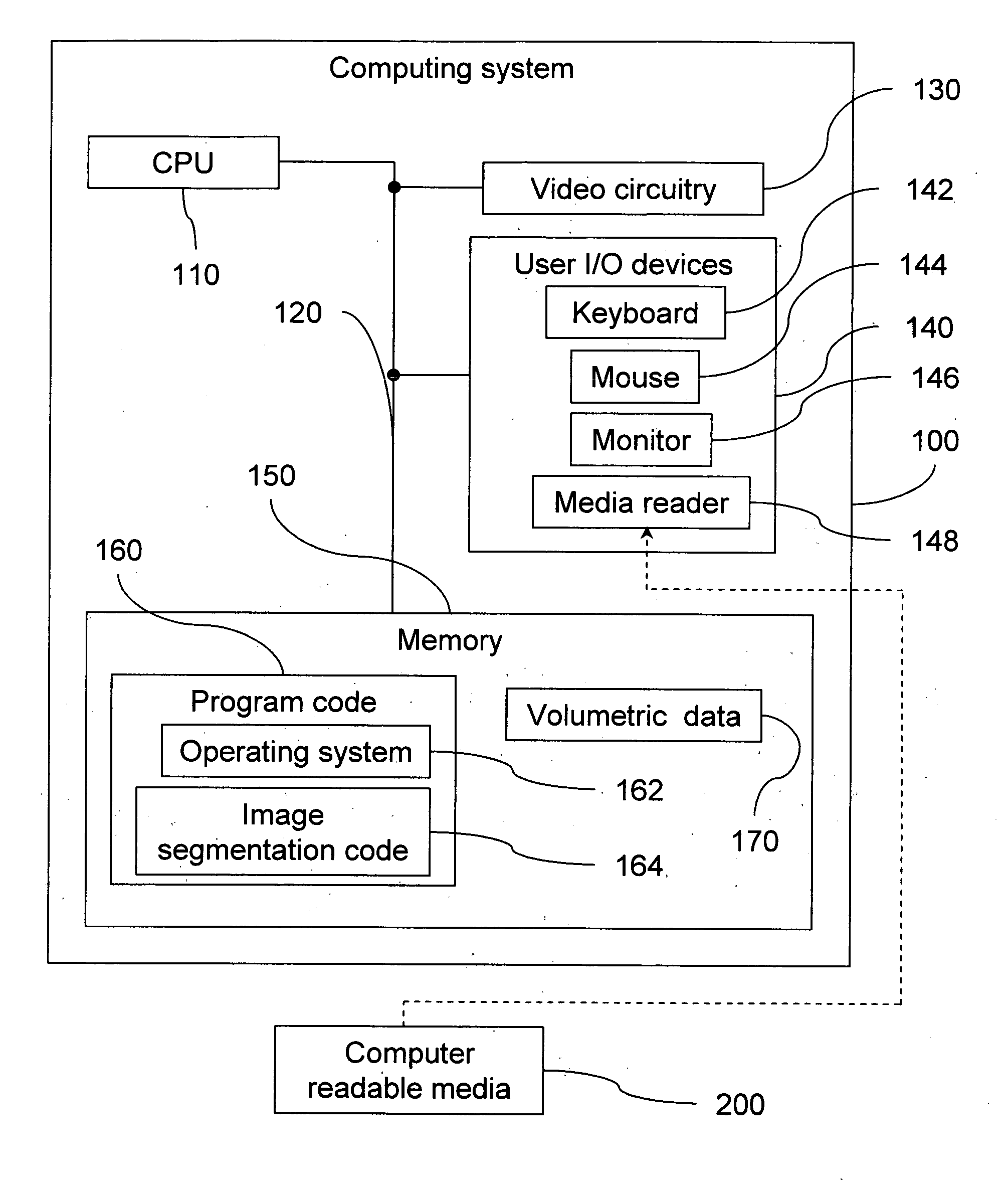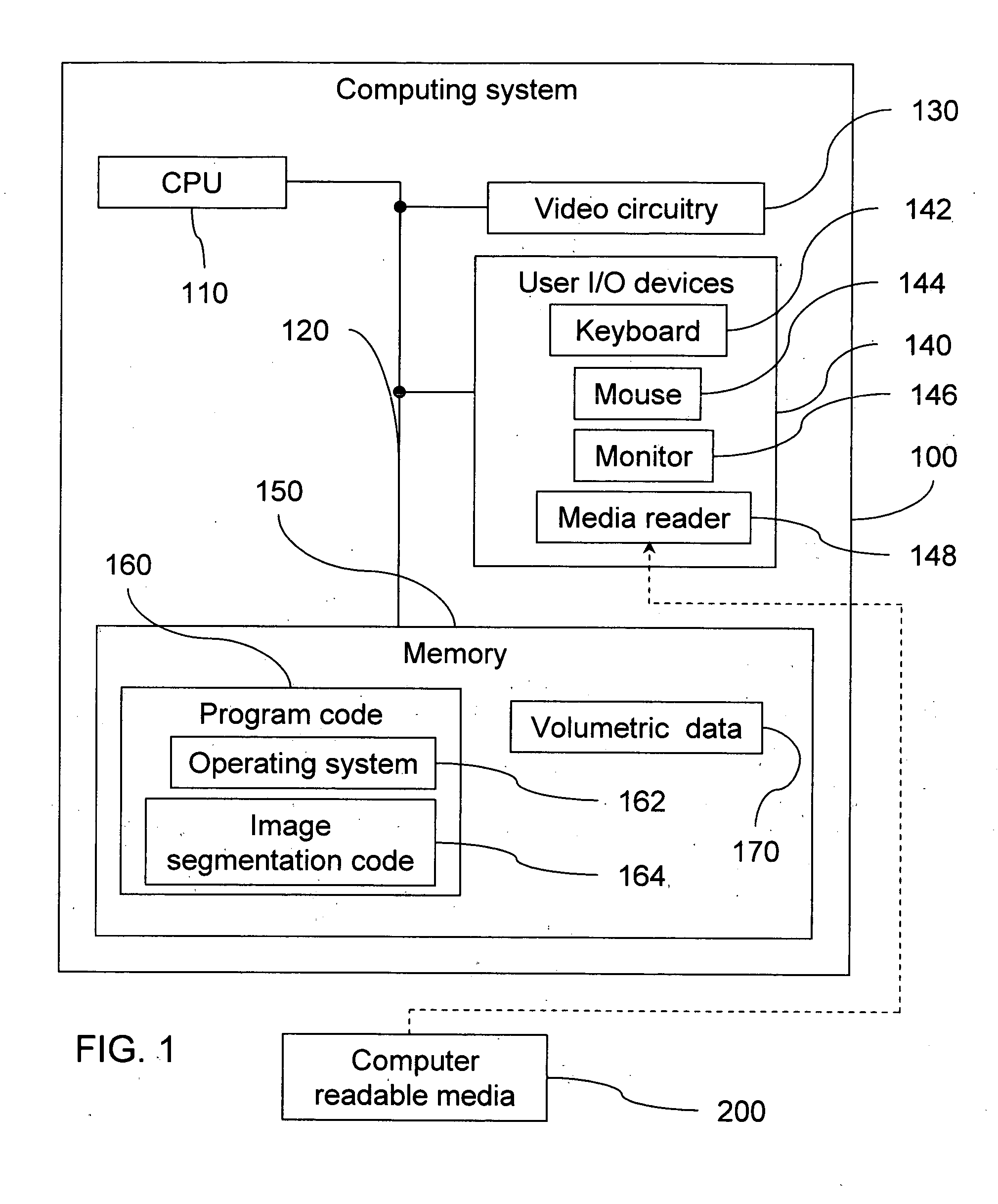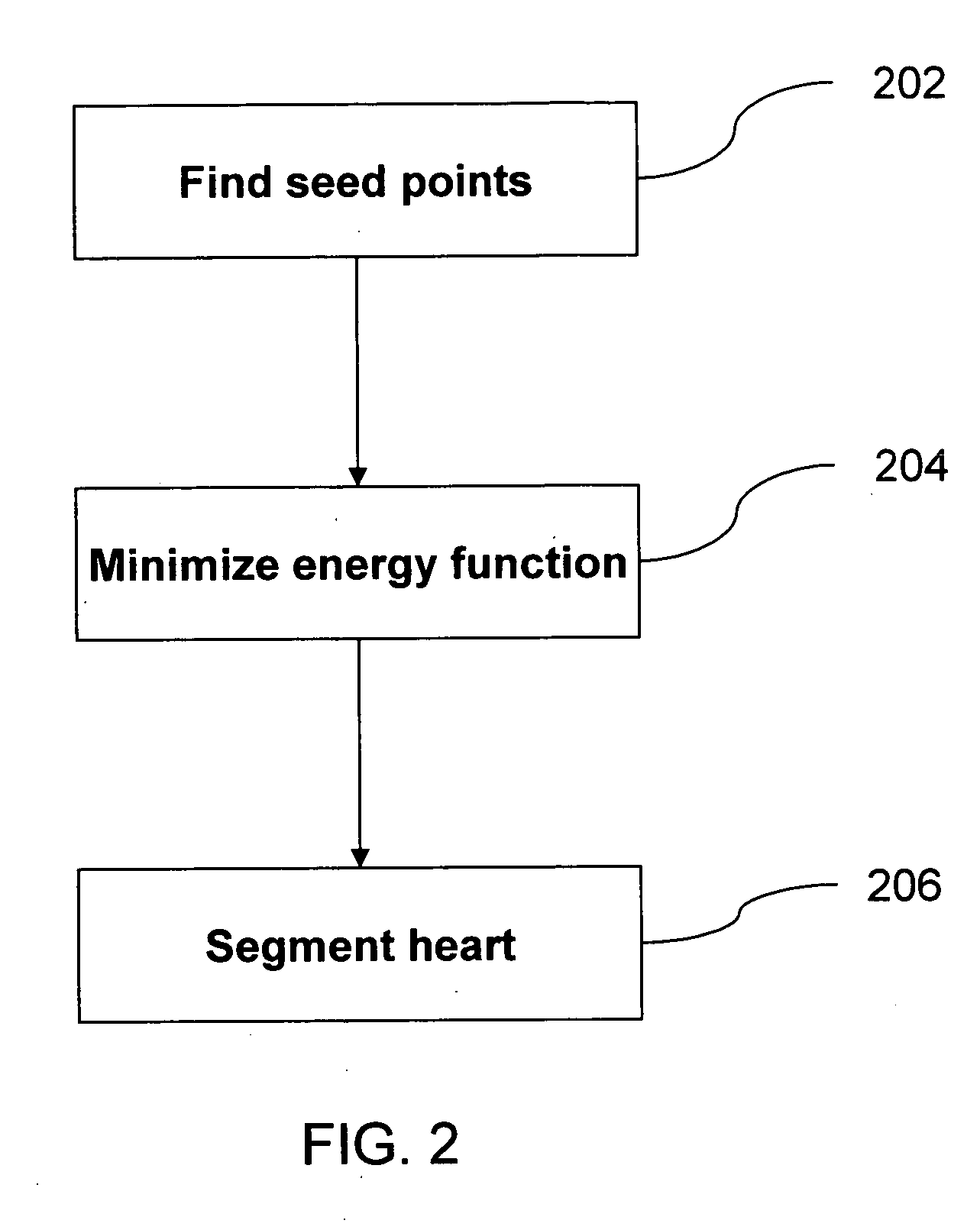CT/MRI heart isolation using a graph cut algorithm
a graph cut and algorithm technology, applied in the field of graphical processing methods and systems, can solve the problems of not being work is not relevant for the instant disclosure purpose, and the segmentation provided by these prior art methods is generally slow, so as to achieve the effect of efficiently isolating the whole hear
- Summary
- Abstract
- Description
- Claims
- Application Information
AI Technical Summary
Benefits of technology
Problems solved by technology
Method used
Image
Examples
Embodiment Construction
[0018] In accordance with an aspect of the present invention, volumetric data, as obtained from medical-imaging equipment, is processed to present to a user a visually useful image corresponding to the volumetric data. The volumetric data may be obtained, for example, from whole heart magnetic resonance angiography (MRA), or CT scans. It will be appreciated that volumetric data obtained by other means may also be utilized. That is, the present invention is not limited to specific types of volumetric data, file formats, voxel or pixel resolutions, or the like. The volumetric data may be thought of as describing a plurality of specific locations in space, each with a corresponding intensity value. Of course, the volumetric data may contain additional information, but such additional information is not required for the purposes of the following disclosure.
[0019] The present invention method may be implemented in the form of a computer program executable on any suitable computing devic...
PUM
 Login to View More
Login to View More Abstract
Description
Claims
Application Information
 Login to View More
Login to View More - R&D
- Intellectual Property
- Life Sciences
- Materials
- Tech Scout
- Unparalleled Data Quality
- Higher Quality Content
- 60% Fewer Hallucinations
Browse by: Latest US Patents, China's latest patents, Technical Efficacy Thesaurus, Application Domain, Technology Topic, Popular Technical Reports.
© 2025 PatSnap. All rights reserved.Legal|Privacy policy|Modern Slavery Act Transparency Statement|Sitemap|About US| Contact US: help@patsnap.com



